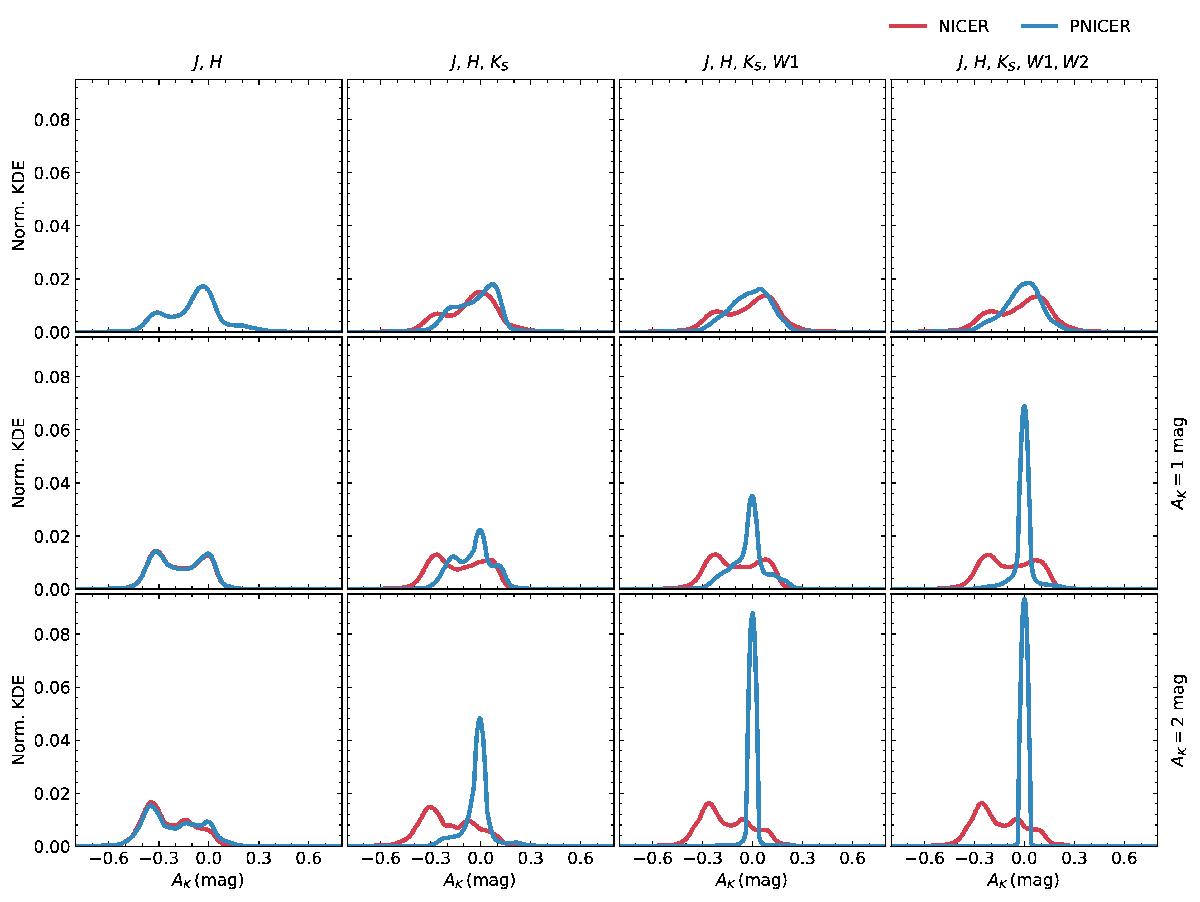Fig. 4

Kernel densities for the derived line-of-sight extinction values for both Pnicer (blue) and Nicer (red) when applying the algorithms to the VISION control field itself. In this case and since the entire control field is extinction-free, the calculated values for should be close to zero. From left to right the number of features is incrementally increased, while from top to bottom we apply magnitude cuts to the “science” field. The magnitude cuts simulate the effects of having an extincted science field, resulting in different populations when compared to the extinction-free control field (e.g., galaxies will be shifted beyond the survey sensitivity limit). In the first row we use all data, while the second and third rows simulate the effect of 1 and 2 mag extinction in the KS band (i.e., KS< 18 mag and <17 mag, respectively for our completeness of KS = 19 mag). Clearly, Pnicer performs better for increasingly different populations and number of available features.
Current usage metrics show cumulative count of Article Views (full-text article views including HTML views, PDF and ePub downloads, according to the available data) and Abstracts Views on Vision4Press platform.
Data correspond to usage on the plateform after 2015. The current usage metrics is available 48-96 hours after online publication and is updated daily on week days.
Initial download of the metrics may take a while.


